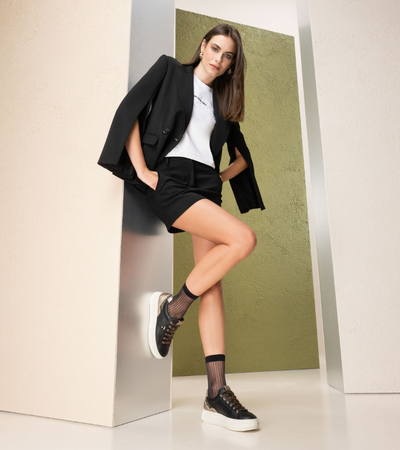How To Choose The Correct Running Shoes
Choose a Running-Specific Shoe
Running shoes may appear to be ordinary sneakers, but they feature advanced technology that aids in running. With each stride you take while running, your foot hits the ground in essentially the same way. Running shoes, unlike sneakers, are meant to protect you from injuries caused by repetitive activity by providing particular cushioning to help with shock absorption and design characteristics that let you move forward more easily.
Get the Right Fit
When choosing a running shoe, the fit should be the most important consideration. A running shoe that doesn't fit properly will not only make your run painful but may also put you at risk of injury.
Choose the Best Running Shoe for You
Running shoes are made to serve a certain purpose. Your running shoes should be selected based on the type of running you want to do.
Understand What You're Paying For
When it comes to running shoes, a bigger price tag usually means more technology and comfort features, but that doesn't mean you have to spend a lot of money to have a good time running. In a similar vein, choosing a low-cost pair may indicate that the shoes were not made for running and may not be able to withstand the demands that running makes on them.
The price of a good pair of running shoes usually ranges from $100 to $250. For running shoes that are well suited to most runners' daily demands, you should anticipate paying between €110 and €150.
Determined Your Gait
There are four basic types of gaits:
1. Severe Overpronation
When your heel strikes the ground first and then rolls inwards excessively, this is known as severe overpronation. When someone overpronates, their ankle loses its capacity to correctly stabilise the body. This is usually someone who has a flat foot or a foot with a very low arch. A motion control shoe is the greatest shoe for an overpronator.
2. Mild Overpronation
This occurs when the outside of the heel strikes first, with the foot rolling inward slightly to absorb the impact. This is usually someone with a low to medium arch who needs to wear a stability shoe.
3. Neutral Gait
In a neutral gait, the middle/slightly outward region of the heel impacts first, with the foot rolling inside somewhat to absorb the impact. A medium arched foot is typical of someone who walks in a neutral stride. A neutral runner's best shoe option is a neutral cushioning shoe.
4. Underpronation (Supination)
Supination occurs when a person impacts the ground with the outside of their heel initially, rolling inward instead of staying on the outside of their foot during the full foot strike. This reduces the ability of the foot to absorb the impact of a foot strike. This is usually someone who has a more arched foot, and they should use a neutral cushioning shoe.
For more information on ‘How To Choose The Correct Running Shoes’ check out our infographic below.
We have a range of Women's and Men's Running, Hiking and Outdoor Shoes coming in a range of styles and colours.



